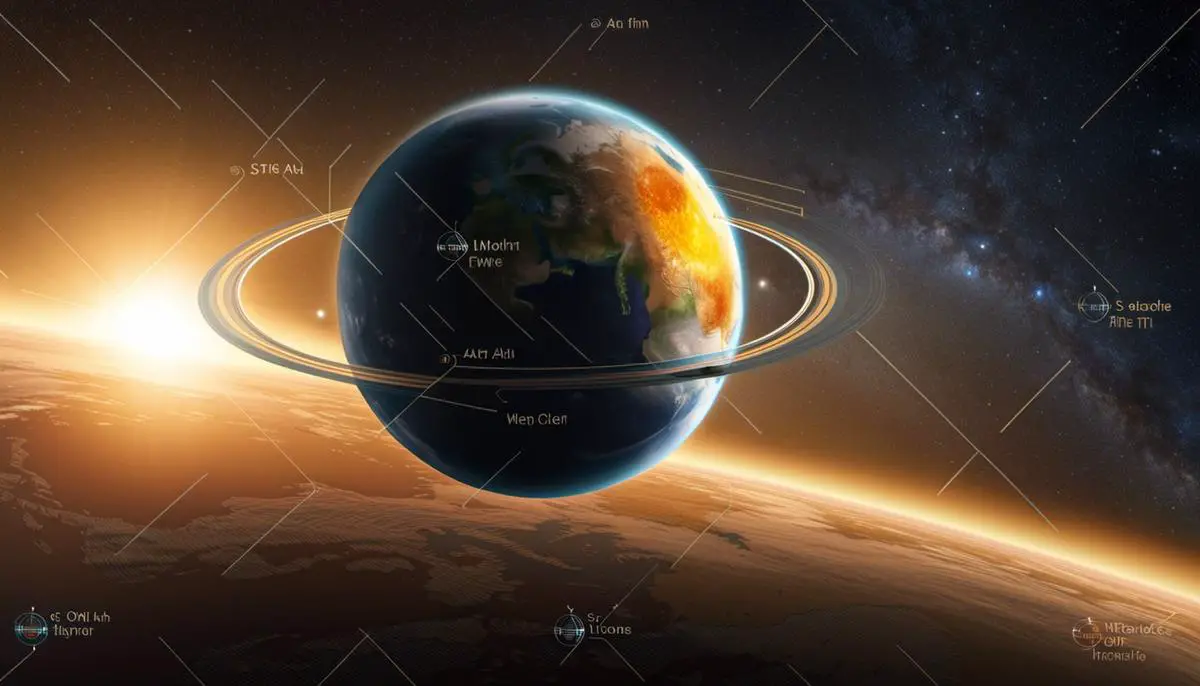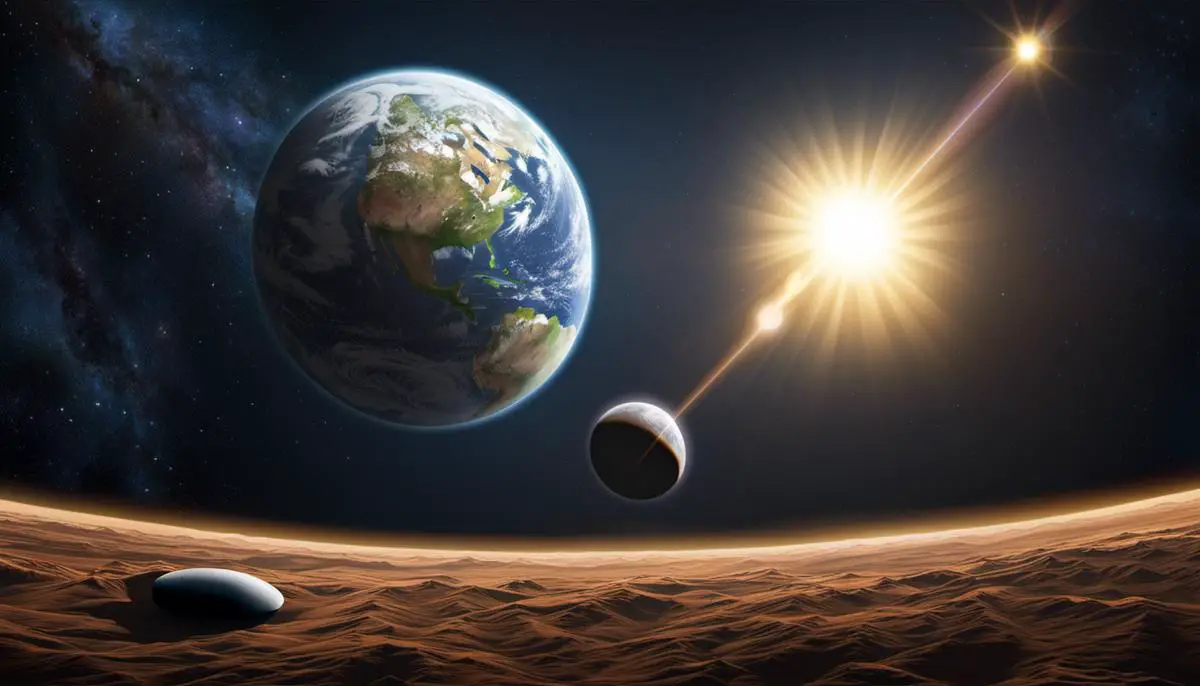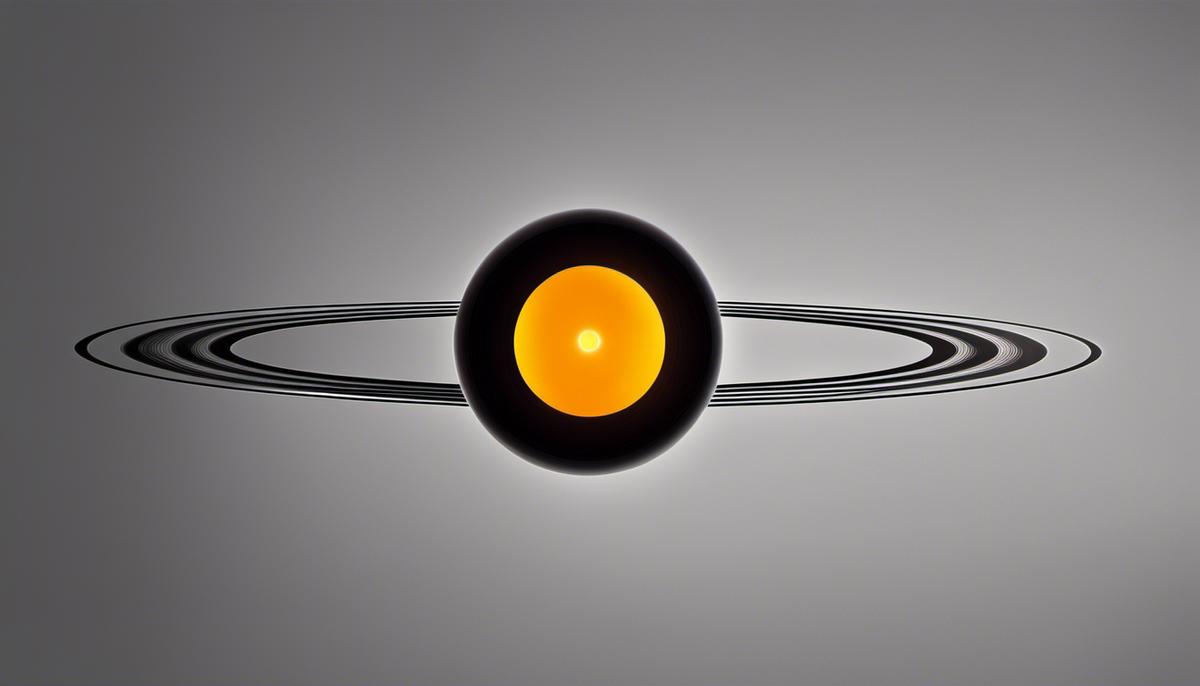The celestial dance between the Earth, the Sun, and the Moon orchestrates a cosmic rhythm that influences life in profound ways on our planet. Our existence is intimately tied to this heavenly ballet, from the changing seasons to climate patterns, tides, and even the spectacular occurrences of eclipses. Exploring the dynamics of Earth’s orbit around the sun, understanding the impact of sunlight on our climate, and comprehending the interplay between the Earth, the Sun, and the Moon provide fascinating insights into the cosmic forces that shape everyday reality. Together these elements weave a intricate tapestry that reveals the breathtaking complexity and beauty of our celestial neighborhood.
Earth’s Orbit Around the Sun
Earth’s Orbital Speed Around the Sun
One of the most amazing factors about space and planetary science is the speed at which the Earth orbits our Sun. Earth orbits at an average distance of 93 million miles from the Sun, taking about 365.25 days to complete a single orbit. This means the Earth travels at an astounding average speed of about 67,000 miles per hour.
However, this speed is not constant and varies over the course of the year due to Earth’s elliptical, not circular, orbit. This means that the distance between the Earth and the Sun changes throughout the year, with the Earth traveling faster when it is closer to the Sun and slower when it is further away.
The Influence of Earth’s Tilt on Seasons
Another crucial point to understanding Earth’s journey around our Sun is the consideration of Earth’s tilt. The Earth’s axis is tilted at an angle of about 23.5 degrees relative to its orbit around the Sun. This tilt, combined with the Earth’s elliptical orbit, is responsible for our seasonal changes.
When the Earth’s tilt is towards the Sun, the Sun’s rays hit the Earth at a higher angle, and it rises and sets more towards the north, creating warmer temperatures and longer days. This is our summer season. When the tilt is away from the Sun, the Sun’s rays hit at a lower angle, and it rises and sets more in the south, resulting in cooler temperatures and shorter days – our winter season.
Earth’s Distance from the Sun: A Year-Round Phenomenon
Contrary to popular belief, Earth’s distance from the Sun does not cause the seasons. Instead, it is due to the tilt of the Earth’s axis. However, Earth’s elliptical orbit does cause the distance from the Sun to change over the course of the year.
At its closest approach, known as perihelion, Earth is approximately 91.4 million miles from the Sun, and this typically occurs around January 3. At its farthest approach, known as aphelion, Earth is approximately 94.5 million miles from the Sun, usually occurring around July 4. Despite this change in distance, the Earth’s varying distance from the Sun contributes only minimally to seasonal temperature changes.
Ultimately, the Earth’s unique elliptical orbit around the Sun, coupled with its distinct axial tilt, significantly influences the conditions and seasons we experience on our planet. By comprehending these fundamental elements, we can better understand complex phenomena, such as planetary climate changes and environmental shifts.

Impact of Sun on Earth’s Climate
Harnessing the Power of the Sun: A Major Influence on Earth’s Climate
As the principal source of heat and light for Earth, the Sun plays a monumental role in shaping our planet’s climate. The Sun emits solar radiation in the forms of light and heat, which are pivotal in generating weather patterns and setting the rhythm of ocean currents worldwide. The manner in which this solar energy is distributed across Earth’s surface is the key to understanding the varying climate zones—ranging from the icy poles, through the searing deserts, and reaching the mild tropics.
Solar Radiation and Earth’s Climate Zones
Different areas of the Earth’s surface receive varying amounts of solar radiation, which primarily depends on the angle at which sunlight hits the Earth. Direct sunlight at the equator allows for higher average temperatures and results in a tropical climate zone. Conversely, at the poles, sunlight comes in at a lower angle and spreads over a larger area, leading to less heating per unit area, giving rise to colder polar climates.
The Greenhouse Effect: Earth’s Thermal Blanket
A significant portion of solar radiation is absorbed by greenhouse gases found in the Earth’s atmosphere, which includes carbon dioxide, methane, and water vapor. These gases trap the heat from the Sun and radiate it back to the Earth’s surface, a phenomenon known as the greenhouse effect. Without this natural insulation, the Earth would be significantly colder, making life as we know it impossible.
Solar Activity and Long-Term Climate Change
Solar output is not constant and undergoes periodic fluctuations, known as the solar cycle. This 11-year cycle of solar activity involves variations in the number and intensity of sunspots, solar flares, and solar winds. Scientists suggest that these changes in solar activity could cause slight changes in the Earth’s climate. However, the magnitude of such natural fluctuations is comparatively small.
Modern Climate Change and the Role of the Sun
Research indicates the increased concentration of greenhouse gases in Earth’s atmosphere from human activities is the primary driver of modern climate change. While changes in solar radiation have contributed to climate variations over geologic time, the warming trend over the past century cannot be explained solely by fluctuations in the Sun’s energy. Multiple studies have shown that the ongoing rise in Earth’s average temperature is significantly influenced by human-induced factors.
Final Thoughts on the Sun-Earth Climate Relationship
Without question, the Sun is instrumental in the shaping of Earth’s climate, contributing to both short-term weather fluctuations and long-term climate zones. Its involvement extends to Earth’s greenhouse effect, which is essential in making the planet conducive for life. However, it’s important to note that even with the Sun’s natural contributions, it cannot be held accountable for the current rapid rate of climate change, which many attributes mostly to human activity. Grasping this multi-layered Sun-Earth climate relationship is vital for forecasting future changes and alleviating the damaging effects of global warming.

The Sun-Earth-Moon Relationship
Perspective on the Interplay between the Sun, Earth, and the Moon
The Earth, Sun, and Moon don’t exist in a vacuum. Instead, they maintain a unique dynamic interaction that has far-reaching effects on life and physical occurrences here on Earth. The main driving force behind this relational interplay is the gravitational field exerted by these cosmic bodies. As Earth spins on its axis and orbits the Sun, and the Moon orbits Earth, we witness a variety of phenomena. These include the cycle of day and night, changing seasons, the Moon’s various phases, tides, and even solar and lunar eclipses.
Phases of the Moon
Phases of the Moon are entirely dependent on its position in relation to the Earth and the Sun. As the Moon orbits the Earth, it reflects sunlight falling on it. The changing positions of the Moon as it orbits the Earth causes us to see it in different phases —New Moon, First Quarter, Full Moon, and Last Quarter— due to the varying amounts of the illuminated part of the Moon’s surface that we can observe from Earth.
Solar and Lunar Eclipses
Solar and lunar eclipses are dramatic demonstrations of the interaction between the Earth, Sun, and Moon. A solar eclipse happens when the Moon passes between the Earth and the Sun, blocking sunlight from reaching the Earth’s surface. In contrast, a lunar eclipse occurs when the Earth blocks sunlight from reaching the Moon’s surface. These events can only occur when the Earth, Sun, and Moon are nearly aligned during New Moon or Full Moon phases.
Tides on Earth
The gravitational pull of the Moon and, to a lesser extent, the Sun, also influences Earth’s waters, causing observable phenomena known as tides. The Moon’s gravity pulls Earth’s water closer to it, causing a bulge or high tide on the side of Earth facing the Moon. There’s a corresponding high tide on the opposite side of Earth due to inertia. The points in-between these two high tides experience low tides. This same gravitational interplay between the Earth and Moon also influences the planet’s rotational speed and maintains the stability of Earth’s axial tilt.
The Gravitational Effect of the Sun and Moon
In addition to powering life on Earth through photosynthesis, the Sun’s vast gravitational pull also influences our planet’s climate and weather. It holds Earth in its orbit and provides the energy that drives weather patterns and ocean currents. On the other hand, the Moon’s gravitational force, while significantly lesser than that of the Sun, has a substantial effect on Earth by creating tides and stabilizing the planet’s axial tilt, significantly impacting climate stability and seasonal changes.
Understanding this complex relationship between the Earth, the Sun, and the Moon offers insights into fascinating phenomena that we observe on Earth and their implications for our life and planetary environment.

Unraveling the intricacies of the relationships between the Earth, Sun, and Moon illuminates our understanding of our place in the cosmos. The elliptical orbit of Earth, influenced by the Sun’s gravitational pull, significantly determines the changing seasons and climate. Meanwhile, the dance of the Sun and Moon affects the ebb and flow of tides, brings forth solar and lunar eclipses, and even impacts long-term climate changes. It’s a grand cosmic equilibrium mastered over eons, a testament to the splendor of natural laws. Above all else, understanding these dynamics reaffirms the remarkability of our existence and nurtures our respect for these celestial bodies that have guided, inspired, and sheltered humankind since the dawn of history.
![]()
